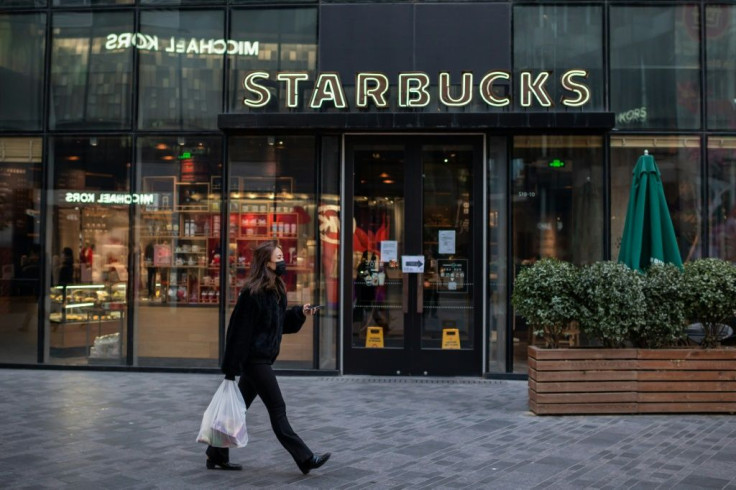Starbucks Fights COVID-19 By Closing Seating Areas, Offers 'To Go' In US, Canada

KEY POINTS
- Strbucks stores in the U.S. and Canada will temporarily revert to a “to go” model
- This means no customers will be allowed seating inside any of its stores
- Starbucks said 90% of its stores in China have now reopened
People go to Starbucks not mainly for the coffee but to meet up with other people in a unique dining experience. This special Starbucks ambience -- or a luxury fun atmosphere, if you will -- is what sets Starbucks apart. That ambience in now being threatened by COVID-19.
In an effort to help contain the COVID-19 outbreak, Starbucks on Sunday announced it will temporarily change to a “to go” model in its U.S. and Canada stores for at least two weeks, or until the end of March. What this basically means is all Starbucks stores won't allow customers to take a seat while they consume their favorite brews or partake of pastries. Think of a drive-thru.
"We are pausing the use of all seating, including both the café and patio areas," Starbucks said in its announcement. "Customers can still walk up and order at the counter, through the 'order ahead' feature in the Starbucks app, via the drive thru and use delivery."
Starbucks also said it will have a modified condiment bar in all stores. There will be temporary closures for company owned stores in high-social gathering locations, such as malls and university campuses. These temporary store closures and reduced operating hours will affect stores in communities with high clusters of COVID-19 cases.
"As we all know, the situation with COVID-19 is extremely dynamic and we will continue to review the facts and science and make the proactive decisions necessary to protect our partners, customers and communities,” wrote Rossann Williams, Starbucks executive vice president and president, U.S. company-operated business and Canada.
Noting every community’s needs are incredibly different, Starbucks wants to make sure it plays a constructive role by taking responsible actions, in partnership with the U.S. Centers for Disease Control and Prevention (CDC) and local public health authorities, so it can continue to do what’s right for its partners and customers.
CEO Kevin Johnson said the announcement builds on a foundation set by Starbucks last week in a letter stating how the company has been preparing to respond quickly to COVID-19 emerging situations. Johnson said Starbucks is currently maintaining regular operations across the U.S. and Canada, but its stores are prepared to modify operations with options that will allow it to serve customers.
"This means that as we navigate this dynamic situation community-by-community and store-by-store, we may adapt the store experience by limiting seating to improve social distancing, enable mobile order-only scenarios for pickup via the Starbucks app or delivery via Uber Eats, or in some cases only the Drive Thru will be open."
Johnson said Starbucks will close a store if it feels it's in the best interest of its customers and partners, or if it's directed to do so by government authorities. It expects any store disruption to be temporary, however. Johnson said Starbucks has learned from its painful experience in China where over 90% of its stores have since reopened.
© Copyright IBTimes 2024. All rights reserved.



















